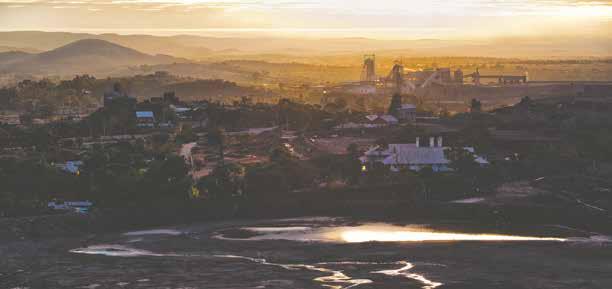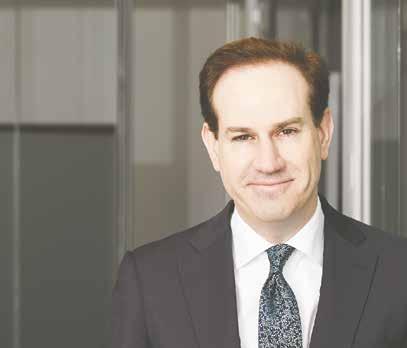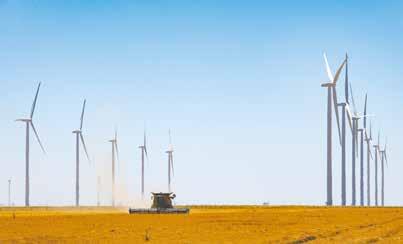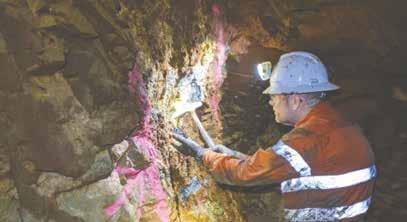
5 minute read
Exploration still going strong
JOSH CHIAT
Despite market pessimism on the back of inflation, interest rate rises and recessionary fears in the back half of last year, Australian mineral exploration continued to thrive.
According to BDO, Appendix 5B reports from ASX-listed explorers suggest more money was spent drilling in the September quarter than at any point since its Quarterly Explorer Cash Update was introduced in 2013.
Australian Bureau of Statistics figures back that up, showing $1.0849 billion was spent on exploration in a September quarter that eclipsed the record expenditure set in the June 2012 quarter – the height of the China-led mining and investment boom.
BATTERY METAL HUNTING
Many commentators believe we are on the cusp of a very different commodity cycle, one fuelled by energy transition metals – think lithium, copper, nickel, manganese, graphite and more.
ABS data shows drilling spend for “selected base metals” in Australia, comprising EV metals like nickel and copper, rose to a record $267 million in the September quarter.
The “other” field, which includes lithium, graphite and rare earths, saw spending up 36.6% QoQ and 69.5% YoY to $140.7 million.
“We've certainly seen a significant pivot towards battery critical minerals over the last six to 12 months; it's been much more noticeable in some of those other minerals, like rare earths, in the last six,” Association of Mining and Exploration Companies CEO Warren Pearce told Stockhead.
“I think that's largely because of significant investor interest and, particularly, a better understanding in the industry about the significant amount these minerals are going to be required for the EV revolution and renewable technologies.”
WA REMAINS ON TOP
When it comes to exploration and mining, Western Australia has proven itself over time to be the luckiest part of the “Lucky Country”.
Spending in WA hit an alltime high of $692.4 million in the September quarter, almost 70% of the national total, with Queensland seeing its biggest quarterly spend since 2012 at $156 million.
Greenfields exploration, generally considered riskier than brownfields work around existing mines, was seemingly prioritised.
Greenfields spend rose from $314.9 million in the June quarter to $344.9 million in the September quarter, with brownfields drilling spend falling slightly to $740 million.
While brownfields exploration retained a larger share of the pie, Pearce said the amount committed to unexplored areas was “extremely encouraging”, with critical mineral support a major factor.
Decarbonisation through electrification is metal intensive.
So much so, a “mega” investment cycle in new supply capacity is required to meet 2050 net zero emissions targets.
And to encourage the required investment, there will have to be an attendant increase in metal prices. There is simply no other way if the supply challenge is to be met. It is an unprecedented supply challenge, too.
As the International Energy Agency explains, lithium, nickel, cobalt, manganese and graphite are crucial to battery performance, longevity and energy density.
Rare earth elements are essential for permanent magnets that are vital for wind turbines and electric vehicle motors, and electricity networks need a huge amount of copper and aluminium, with copper being a cornerstone for all electricity-related technologies.
BHP sees the need for nickel output to lift fourfold and copper twofold in the next 30 years, while Rio expects lithium demand could grow sevenfold before 2030 – all in pursuit of net zero emissions by 2050.


Rare earth elements are essential for wind turbines

132%
Lithium had a stellar 2022, rising by more than 132% to more than US$80,000/t.
US$370bn
The US government will spend US$370bn on clean energy over 10 years.
7x
Rio expects lithium demand to grow sevenfold before 2030, in pursuit of net zero emissions.
Other battery metals and green energy minerals, such as zinc and silver, along with the steel required for the clean energy infrastructure build-out, also stand to benefit from the decarbonisation push.
The full suite of battery materials are connected to the low emission technologies the world is banking on as it sets about decarbonising energy and transport. Last year, the US government alone committed to spending US$370 billion on clean energy projects over 10 years.
There was also another US$131 billion committed globally to new battery gigafactories on Benchmark Minerals Intelligence estimates, taking the commitment in the last four years to US$300 billion. Each gigafactory needs to secure the requisite battery metals. The resultant cornucopia of opportunities in the clean energy/battery metals space has reenergised the junior explorers and developers sector on the ASX.
Gold has long been the dominant focus of the junior brigade. But now there is a growing band of juniors focused on the battery metals space. Some have already made the transition to major mining company status on the back of the thematic.
The transitions achieved to date have primarily been in the lithium sector. Lithium producer Pilbara Minerals (ASX:PLS) is a prime example, thanks to its march from penny dreadful status in 2014, when it first went looking for lithium, to the $13 billion company it is today.
New mine developments in copper, nickel, manganese, graphite and other battery metals and minerals are also in the offing as juniors – with support from a battery focused investor base –convert exploration upside into producing mines.


As should be expected, the emerging mega mining cycle in the broad sweep of battery-related metals and minerals will not be without bumps and setbacks. The potential for recessions in the major economies is a near-term threat.
But again, the scale of the supply challenge for the metals and minerals needed for global decarbonisation stands as a supporting influence for the long term. While comforting for investors in the longer term, they need to remain alert for short-term commodity demand and price fluctuations.
Lithium again provides the example. The key battery material had a stellar 2022, rising by more than 132% to more than
US$80,000/t. The surge fuelled share price gains for junior explorers and producers alike.
Share prices were nevertheless hit on a couple of occasions due to negative price outlook assessments by investment banks. And there was some price weakness late in the year. But lithium shares have started 2023 strongly.
It seems that the late December/ early new year price retreat to around US$76,000/t is being seen for what it was – a response to quieter activity ahead of the Lunar New Year, and the lingering effects of China’s COVID lockdowns.
Consensus is for prices to ease further in 2023 to around the US$65,000/t level. But there is no certainty in that as might be expected in a commodity where supply continues to fall short of rapidly growing demand, and where question marks remain over the speed at which new production to fill the gap can be brought to market.
And when it comes to the pricing of lithium producers and explorers on the ASX, the market is already factoring in lower prices. It means that while 2022 was a bumper year for the lithium stocks, 2023 could yet deliver some upside surprises.
Any retreat in current lithium prices also needs to be put in context. The current price remains phenomenal given that on estimates by Canaccord, a lithium price of (only) US$16,000/t is required to deliver a 15% internal rate of return (IRR) for lithium projects, rising to US$18,500/t for an IRR of 20%.
The world’s biggest miners BHP and Rio Tinto are at odds over whether the lithium industry is the place to be in the years ahead. While acknowledging lithium has been “hot’’ in recent times, BHP has decided it does not want to be in the space, preferring to focus its battery metals exposure to copper and nickel. BHP chairman Ken MacKenzie argued last year that the barrier to entry was quite low and that lithium was abundant.
“So it is not necessarily a commodity that we’re interested in pursuing at this point of time.’’ Rio has different ideas, while also having copper and nickel in its sights for growth.
It wants to invest $US2.4 billion in a lithium project in Serbia, subject to currently withheld government approval, and last year spent $825 million buying a lithium project in Argentina as it expects elevated demand and pricing for a "long period of time".


